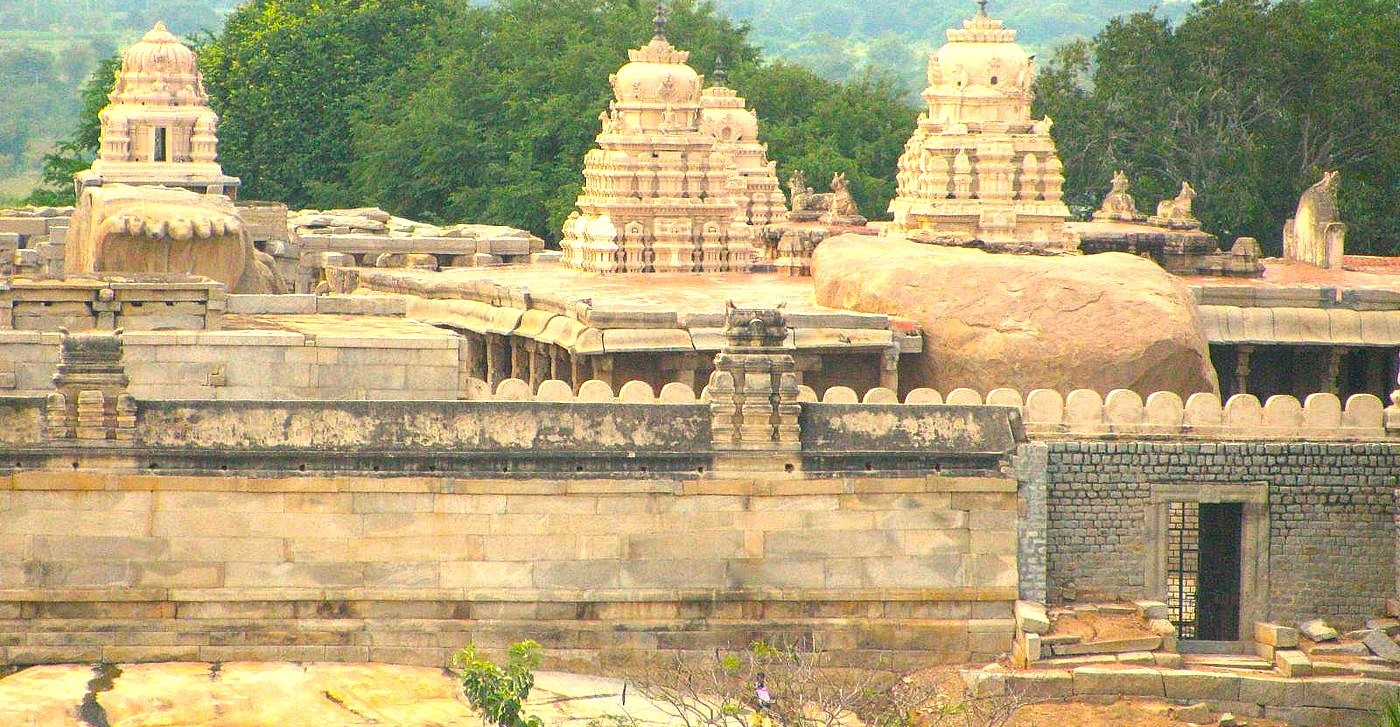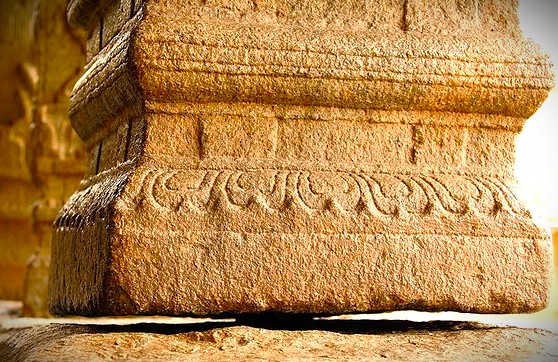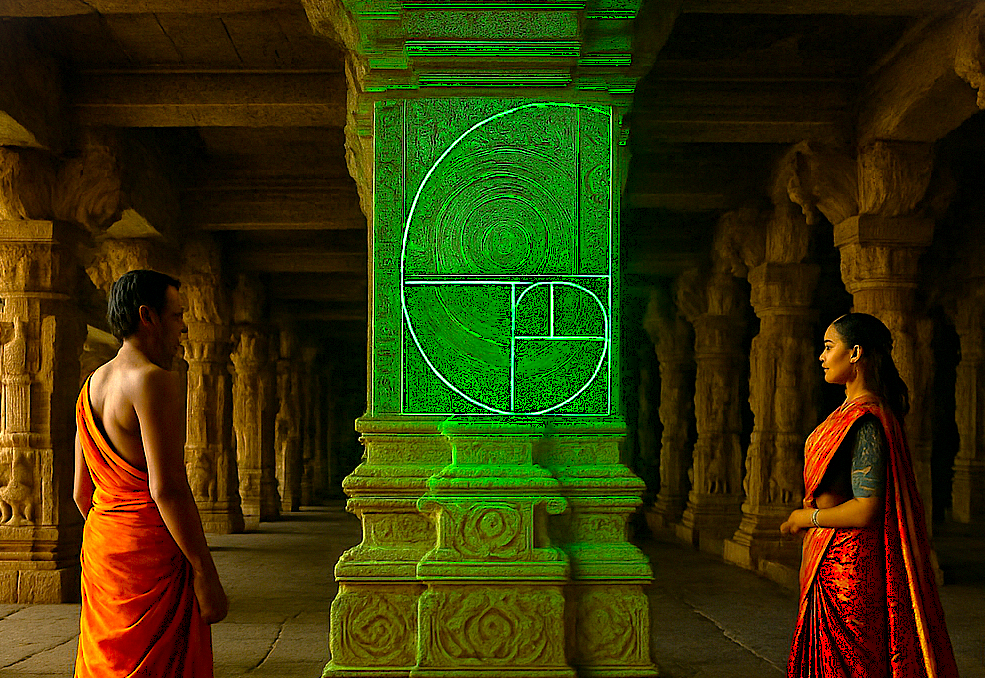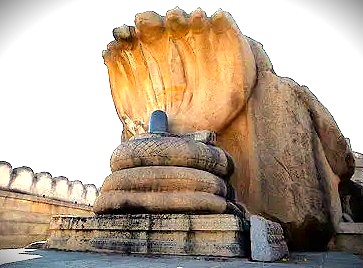Echoes of Ancient Pasts
Veerabhadra Temple Floating Pillar Lepakshi
Mother Masala Tours
Mysterious and Thought Provoking
Veerabhadra Temple Floating Pillar Lepakshi. Andhra Pradesh. Intricate engineering and artistry from the Vijayanagara Dynasty. This pillar, located within the temple built in the 16th century CE, appears to defy gravity by hanging millimeters above the ground. This extraordinary design is attributed to the architectural ingenuity of the Vijayanagara artisans under the guidance of the royal patronage of Achyuta Deva Raya, a ruler of the Vijayanagara Empire. The term "Lepakshi" translates to "rise, O bird," a reference to the mythological story of Jatayu from the Ramayana. Rama reached this location after the mythical bird, mortally wounded by Ravana, fell while attempting to rescue Sita. The temple is dedicated to Veerabhadra, a fierce form of Shiva, and the Hanging Pillar is one of its 70 intricately carved columns.

Veerabhadra Temple Floating Pillar Lepakshi: Timeless Artifacts
Surrounded by intricate sculptures and stone carvings honoring Shiva and Parvati. This pillar, carved out of a single granite block, is one of the most iconic testaments to the engineering precision of the Vijayanagara craftsmen. The temple complex itself, with its detailed halls and mythological themes, immerses us in an atmosphere deeply tied to devotion. The ground beneath the Temple, remains untouched, a peaceful void that inspires reflection. For centuries, the temple has served as a sacred and artistic treasure for historians and devotees alike, exuding a timeless brilliance that invites awe.
Ancient Mosaics: Impeccable Craftsmanship

The Hanging Pillar stands proudly within a magnificent hall, surrounded by 70 intricately carved stone columns. Each pillar is a masterpiece, adorned with detailed depictions of celestial beings, valiant warriors, and exquisite floral motifs that seem to come alive. An engineering masterpiece, one column defing gravity, 'hanging' above the ground. This deliberate and ingenious feat was achieved by the brilliant Vijayanagara artisans, revealing their advanced skills and artistic vision. Look up to admire the adjoining ceiling, where vibrant frescoes tell stories of Shiva and Parvati.
The Pulse of the Local Community
The people of Lepakshi value their heritage and the mystery of the Hanging Pillar. Reverence for the structure extends beyond the temple as locals embody a peaceful commitment to sharing its story, welcoming others into the rich history of the temple. Proud of their artistic ancestry, this quiet community expresses hospitality rooted in tradition.
Capturing the Magic: A Photographic Haven

The Temple offers an elegant lens for capturing ancient design. Whether framed against temple interiors or highlighted by sunlight streaming through open courtyards, this column’s unique suspension creates a scene of subtle mystique. It’s a photographer’s dream, inviting you to explore its secrets through your camera lens. Imagine the intricate carvings bathed in soft, diffused light, revealing stories etched in stone over centuries. The way it hangs, seemingly defying gravity, adds an almost magical quality to every shot. Sunlight can transform its appearance, casting dramatic shadows that emphasize its ancient craftsmanship and the mystery of its construction.
A Culinary Journey: Savor the Flavour
Veerabhadra Temple Floating Pillar Lepakshi. Nearby, the local cuisine echoes the flavors of Andhra’s heritage. A staple here is gongura pachadi, a tangy chutney paired with steaming rice. Traditional clay-pot sweets like payasam reflect the village’s ties to the sacred Lepakshi temple feasts. Meals near Lepakshi honor both history and flavor, bringing together fresh, farm-grown ingredients.
The Connection with the Gods

Shiva in his Veerabhadra form, are said to have inspired the miraculous engineering of this suspended column. The space where the pillar meets the ground is believed to emanate divine energy, reinforcing mythology's deep ties to temple construction. The atmosphere at the Temple intensifies when we observe how the pillar appears to hover in defiance of natural laws, creating a peaceful yet stunning manifestation of celestial intervention. Local priests maintain that the column serves as a bridge between earthly and divine realms, where gods demonstrate their omnipotence through this display of cosmic architecture.
Serendipitous Meetings: Beyond the Main Path
Wandering through the streets of Lepakshi near the temple, we encounter artisans preserving centuries-old traditions of stonecraft. Their tools and techniques often reflect methods speculated to have been used to create the Hanging Pillar. Small markets in the area contain devotional artifacts connected to the temple's themes of unity between artistry and faith.
Ancient Technologies: Sacred Sound, Geometry & Astrological Influences

This ingenious granite construction serves a dual purpose: providing robust support and acting as a spiritual conduit, based on Vastu Shashtra principles, thought to amplify harmony within the sacred space. The finely carved stonework further enhances the temple's mystical atmosphere by influencing its acoustics. This design allows ancient chants and sacred invocations, performed during revered temple rituals, to resonate with remarkable clarity throughout the Mandapa. Furthermore, the environment is carefully tuned to specific Solfeggio frequencies, including the renowned 528 Hz. These significantly guide meditation practices and foster a deep sense of calmness.
Festivals of Devotion: Honouring the Sacred and the Divine
The Shivaratri Festival, celebrated every year, creates an atmosphere of devotion resonating through the halls, including the area surrounding the Hanging Pillar. Lamps are lit, and elaborate ceremonies honor the fierce form of Shiva, drawing immediate connection between mythology and worship during this sacred evening observance.
Resilience and Renewal: Overcoming Adversity’s Challenges

Like all historical monuments, the Hanging Pillar has faced the relentless ravages of time. Its ancient stones have witnessed centuries of change, standing firm against natural erosion and the passage of countless eras. A fascinating anecdote from the 19th century recounts how early British engineers, driven by scientific curiosity, attempted to adjust the column. This intervention, though perhaps well-intentioned, inadvertently disturbed its delicate balance, a testament to its unique and precise construction. Despite such significant challenges and the sheer weight of history, the pillar remarkably remains intact.
Urban Legends: Strange Sightings, Myths, and Mysteries
Veerabhadra Temple Floating Pillar Lepakshi. One legend suggests that the temple architects deliberately left the pillar suspended to display their skills and defy basic perceptions of gravity. It is also locally believed that touching the ground underneath the pillar can bring good luck and divine blessings. Stories of people witnessing unexplained light formations near the temple further deepen its mystical aura.
Holy Cow! India is Everything You Didn’t Know You Needed

Like all historical monuments, the Hanging Pillar has faced the relentless ravages of time. Its ancient stones have witnessed centuries of change, standing firm against natural erosion and the passage of countless eras. A fascinating anecdote from the 19th century recounts how early British engineers, driven by scientific curiosity, attempted to adjust the column. This intervention, though perhaps well-intentioned, inadvertently disturbed its delicate balance, a testament to its unique and precise construction. Despite such significant challenges and the weight of history, the pillar remarkably remains intact.
Symphony of Generosity: Offerings from Wanderers to Residents
The village surrounding the temple holds a timeless generosity, where generations of families are deeply committed to preserving the temple’s vibrant cultural energy. Local artisans, with skills passed down through centuries, and devoted priests eagerly share the legends of the Hanging Pillar. They explain its intricate engineering with pride and narrate its sacred story with genuine warmth, welcoming questions from curious visitors. This creates a peaceful, authentic exchange that goes beyond simple tourism, inviting visitors not just to see, but to understand. It is through these personal connections that the temple's profound history is kept alive, breathing with the spirit of its community.